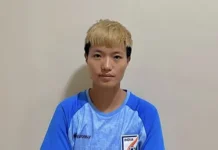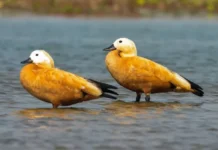[ Suhas Chakma ]
Should 65,000 Chakmas and Hajongs with about 7,700 voters be an issue in the parliamentary elections of 1.4 billion people? In normal circumstances, their existence itself is unlikely to be noted in such an election. Yet, union Earth Sciences Minister Kiren Rijiju just turned them into an electoral issue after he claimed on 17 April, 2024 to have held discussions with Chief Minister of Assam Himanta Biswa Sharma on the relocation of the Chakmas and Hajongs to Assam.
As the relocation of the Chakmas and Hajongs became the burning issue before the second phase of elections in Assam on 26 April, Sharma was quick to deny the same.
It is a case of déjà vu. In September 1994, then Congress chief minister Gegong Apang had threatened to drive out the Chakmas from Arunachal Pradesh. Then Congress CM of Assam, Hiteshwar Saikia, responded with ‘shoot at sight’ order on the fleeing Chakmas. Saikia’s order provoked outrage and it instantly became an international issue with Amnesty International issuing an appeal for protection. The Chakmas and Hajongs had not looked back, but exactly 30 years later, Rijiju’s claim has been shot down by another Assam CM from the same party.
The idea of relocation of 65,000 Chakmas almost 60 years after their settlement defies logic and law. There is indeed no such precedence in India of relocating migrants from one state to another to resolve any dispute. The only precedence that exists in India is the acceptance of the migrants where they flee. Tripura had to accept over 30,000 Brus who fled from Mizoram in 1997; Andhra Pradesh (including Telangana) had to accept over 50,000 tribals displaced by the Maoists conflict in Chhattisgarh in 1997, while about 450,000 Kashmiri Pandits had to be accepted in Jammu, Delhi, Himachal Pradesh, etc.
No state government in the Northeast can accept relocation of the Chakmas and Hajongs, given the sensitivity of the ‘outsider insider’ debate. In the post partition India, the Northeast has been defined by anti-foreigner agitation. When the Citizenship Amendment Act (CAA) was being brought in December 2019, the union government was fearful of mob violence and potential attacks on symbols of the government of India because of the grant of citizenship status to foreigners. The union government therefore decided to exempt Arunachal, Nagaland, Manipur, and Mizoram and the 6th Schedule areas from under Section 3(4) of the CAA.
Be that as it may, the Chakmas had submitted their citizenship applications under Section 5 of the Citizenship Act and not the CAA; and therefore, the CAA is irrelevant to the Chakma-Hajong imbroglio.
It was only on 24 April, 2024 that the Mizo Zirlai Pawl’s Champhai branch issued an advisory restricting the Chin refugees from purchasing land or owning businesses in the area. The reaction of the MZP to the ethnic brethrens is not an exception – Muslim Ummah regularly falters each time on the Palestinian and Rohingya refugee issues.
Mainstream Aruna-chalis never accepted the Chakma and Hajong migrants, though following the 1996 Supreme Court, they have come to live with the idea that Chakmas and Hajongs are here to stay. While acting as the interlocutor of the ministry of home affairs (MHA) on the Bru displaced persons, I had suggested to the MHA officials concerned to establish a high-power committee to resolve the Chakma-Hajong imbroglio. Formal communications from the stakeholders followed, and on 10 August,2010, the high-power committee, consisting of the All Arunachal Pradesh Students’ Union, the Committee for Citizenship Rights of the Chakmas and Hajongs of Arunachal Pradesh, the Arunachal government and the MHA was set up. The aim was to increase understanding of each other’s issues.
Apparently, the State government decided to walk out of the Centre mediated dialogue. During July 2021, it formed a State-level high-power committee minus the Chakmas and Hajongs, and took a series of measures which the Chakmas had to redress through interventions of the NHRC, the union of India and the United Nations.
In his address on 15 August, 2021, Chief Minister Pema Khandu announced the relocation of the Chakmas and Hajongs outside the state, and both Khandu and Rijiju repeatedly pressed the relocation of the Chakmas and Hajongs, with the AAPSU joining the chorus. These two prominent leaders of the state and the AAPSU are unlikely to change their positions, notwithstanding the statement of the Assam chief minister.
Though the mainstream Chakmas and Hajongs always demanded basic civil rights as general category people, radicalisation is bound to creep in. Nonetheless, despite Changlang district being the hotbed of insurgency in Arunachal, the Chakma and Hajong movement remained largely constitutional. By 2017, the Chakma Rights and Development Organisation (CRDO), led by Mahendra Chakma,rejected the demands of the mainstream Chakmas, ie,citizenship as general category people, stating that he is “not too keen to have this so-called citizenship that takes away land rights and deprives scheduled tribe status and it is too little, too late”.
On 25 March, 2021, the CRDO submitted a memorandum to Khandu during his tour to Changlang district, demanding the restoration of rights, including gun licenses, permanent residence certificates and scheduled tribes certificates to Chakmas who are citizens of India by birth; and the creation of a separate autonomous territorial council for the Chakmas to resolve the imbroglio.
Currently, the Chakma and Hajong imbroglio is caught between the demand of the mainstream Arunachalis, including the CM, Rijiju, and the AAPSU to expel them from Arunachal through relocation, and demands of the fringe elements of the Chakmas demanding not only ST and PRC but a separate autonomous territorial council to resolve the citizenship demand.
The security challenges for Arunachal, for which the Chakmas and Hajongs were brought in the 1960s,remain the same. Had there been no Sino-India war in 1962 and had the union of India not launched a scheme for settlement of people in the NEFA,including in Vijaynagar area to beef up security, the Chakmas and Hajongs would not have been settled there.
Following the India-China clashes at Pangong Lake in Ladakh in May 2020, China has been establishing thousands of Xiaokangsor model villages along the India-China borders. From February 2023, India has launched its Vibrant Village Programme to develop 3,000 border villages, including in Arunachal, to counter the Xiaokangs. If push comes to shove with the Chinese aggression, India is more likely to populate the border areas along the India-China border.
Furthermore, as Arunachal has been opened up for business and strategic developments, more migrants will settle in Arunachal.
In the meanwhile, the Chakma-Hajong imbroglio has become a prisoner of community and power politics in the state. The rule of law has so far prevented radical elements from both sides from taking illegal measures. History is instructive: it does not take time for the fringe elements to get traction. (The contributor is the founder of the Chakma Development Foundation of India)






